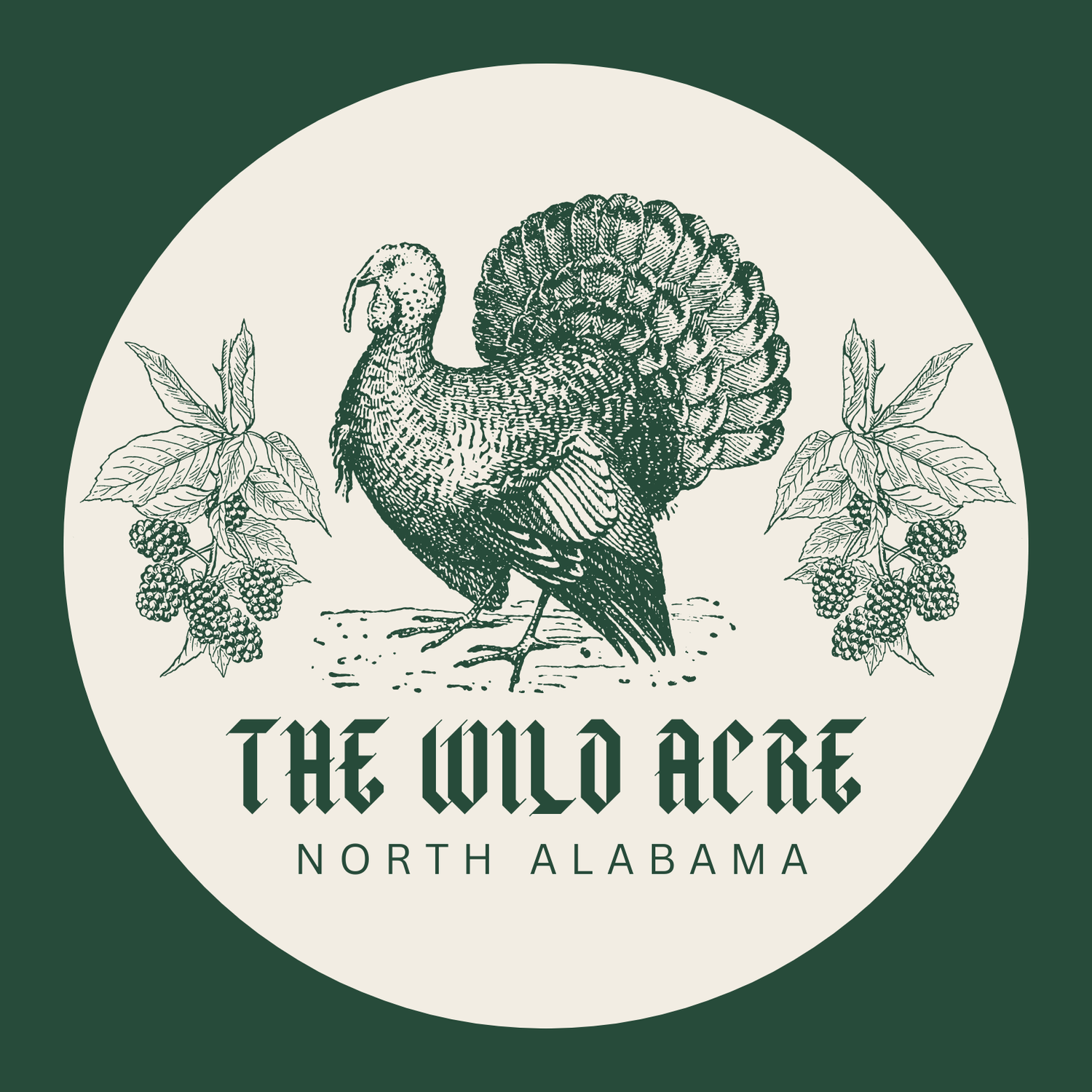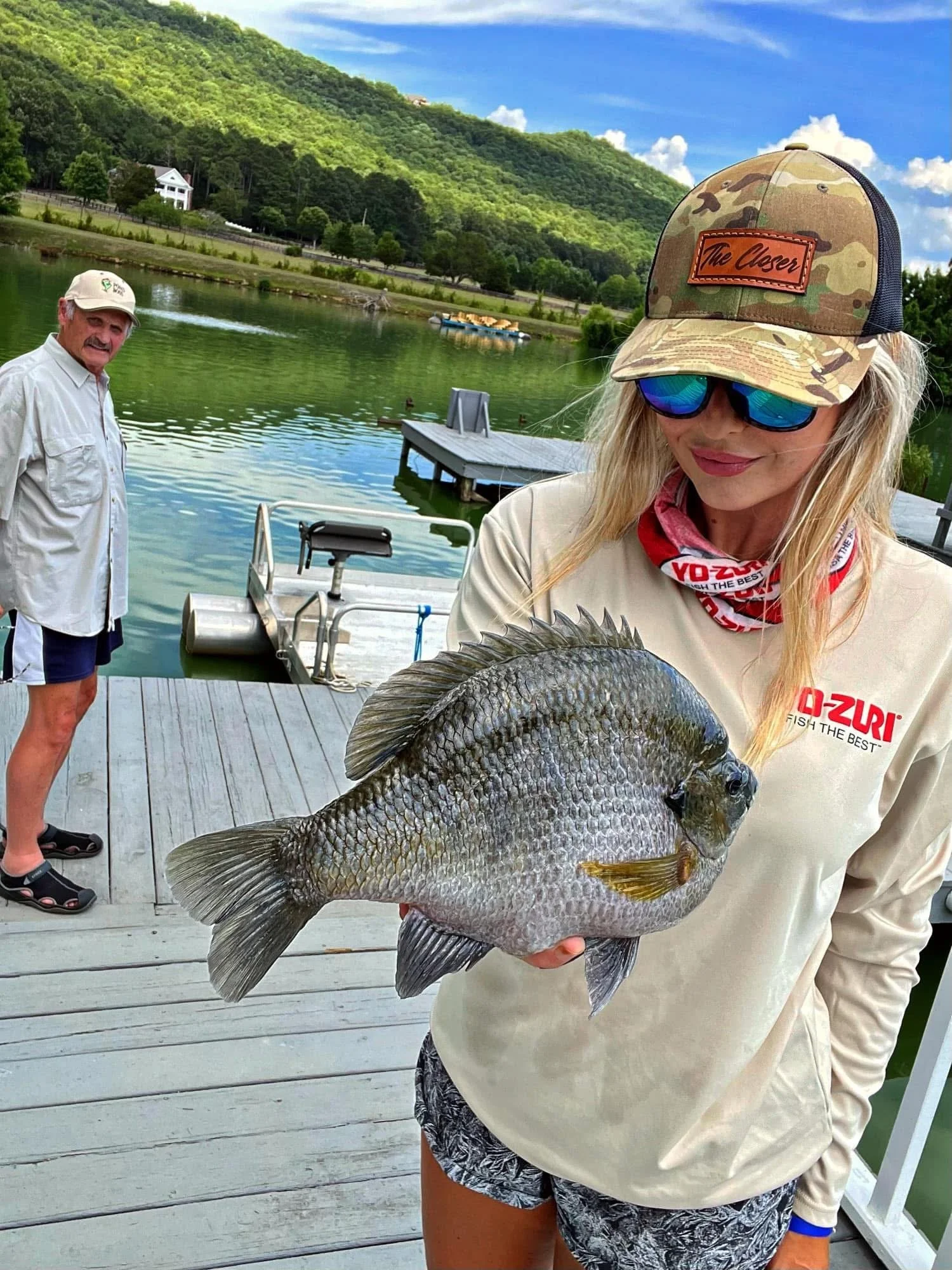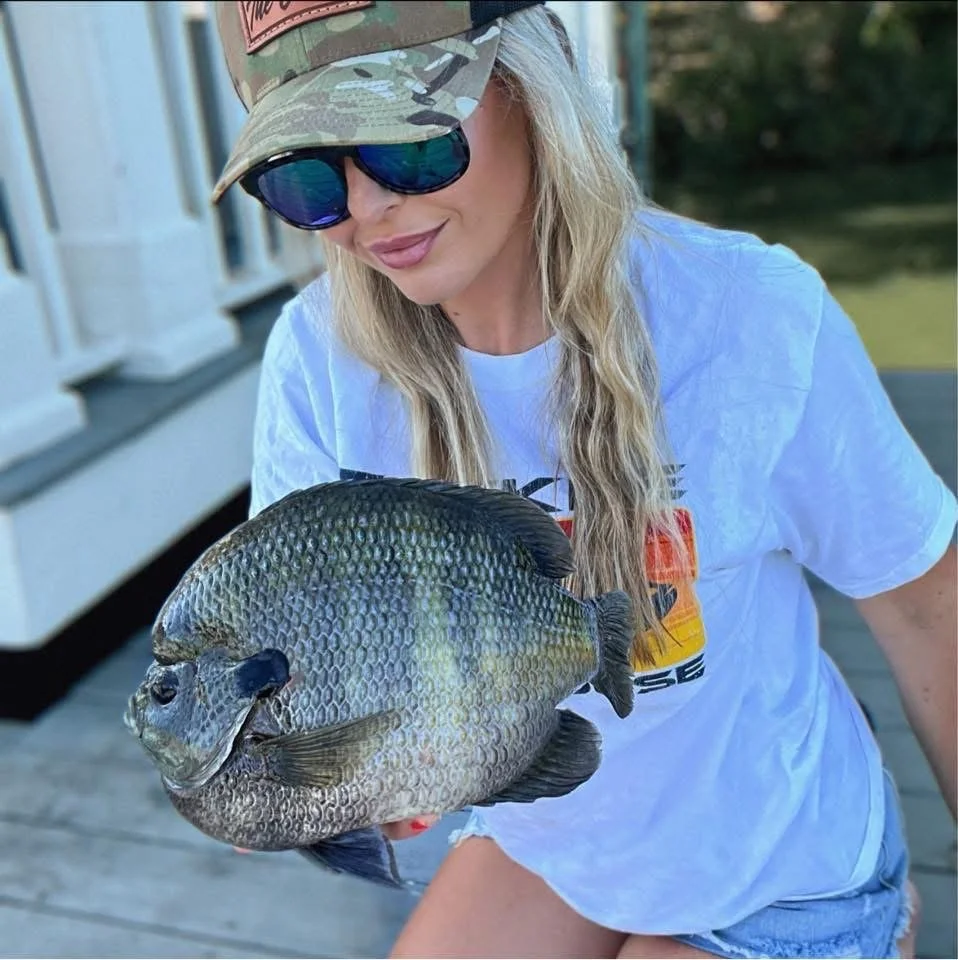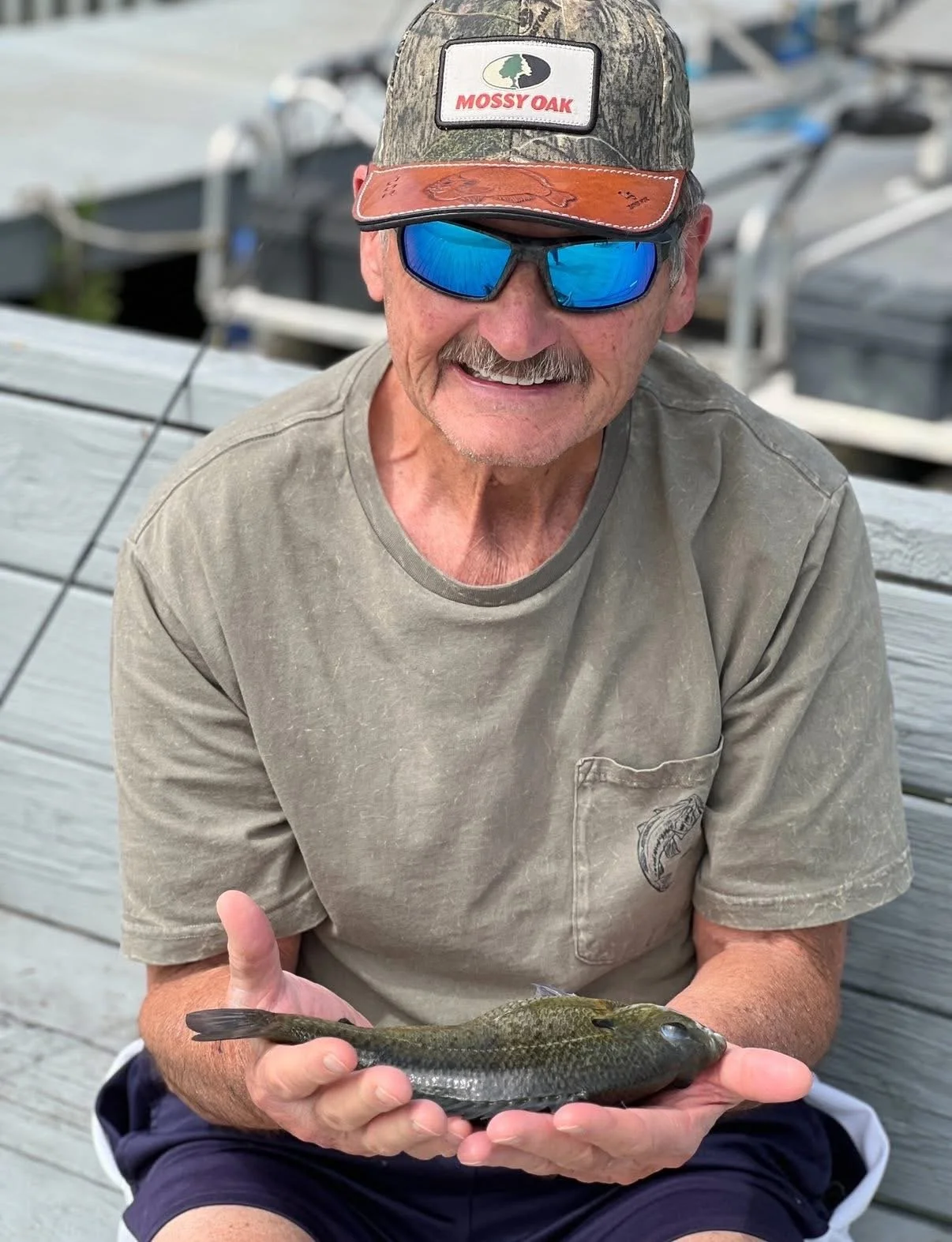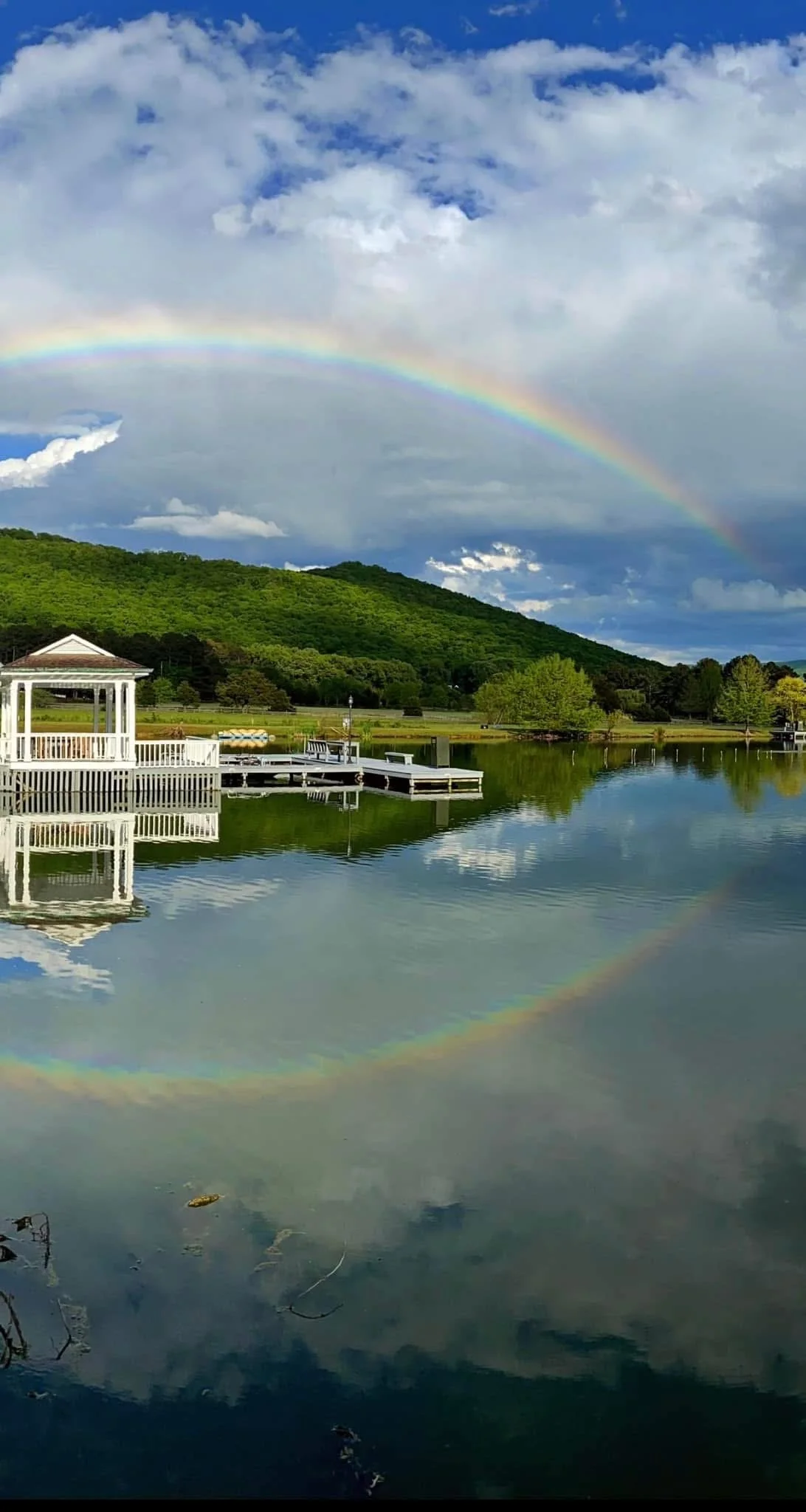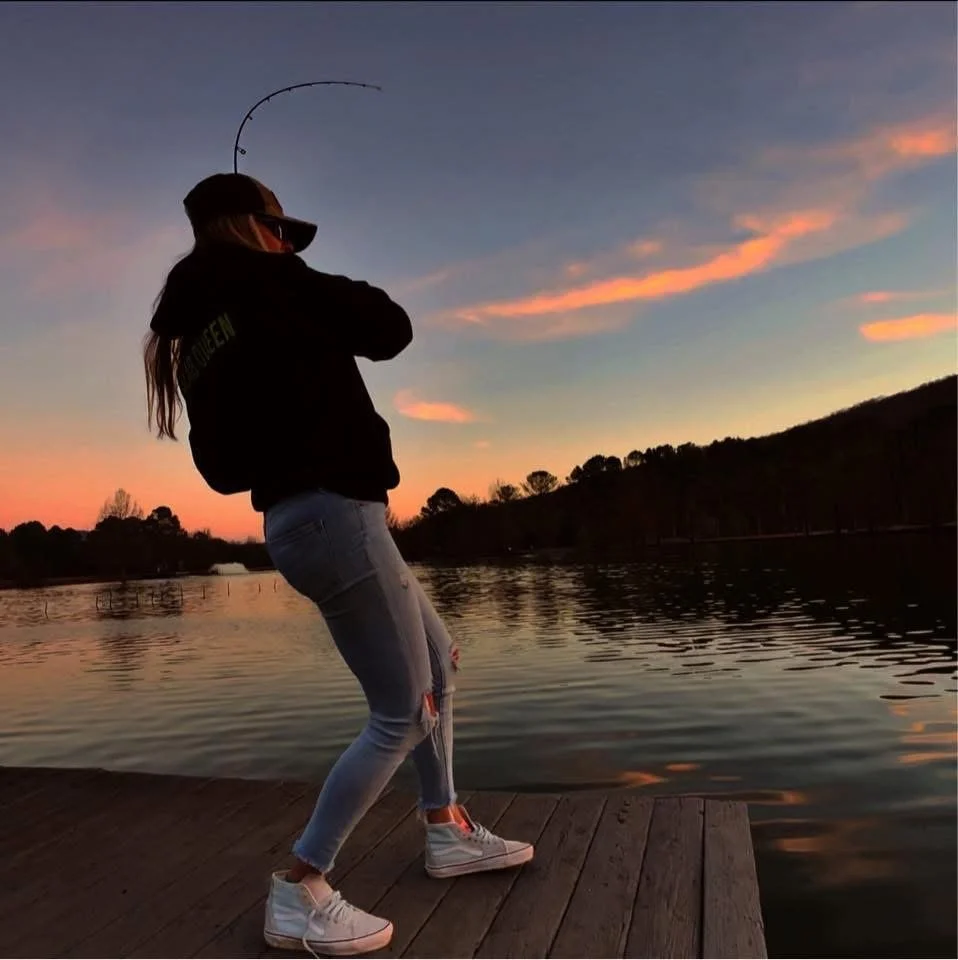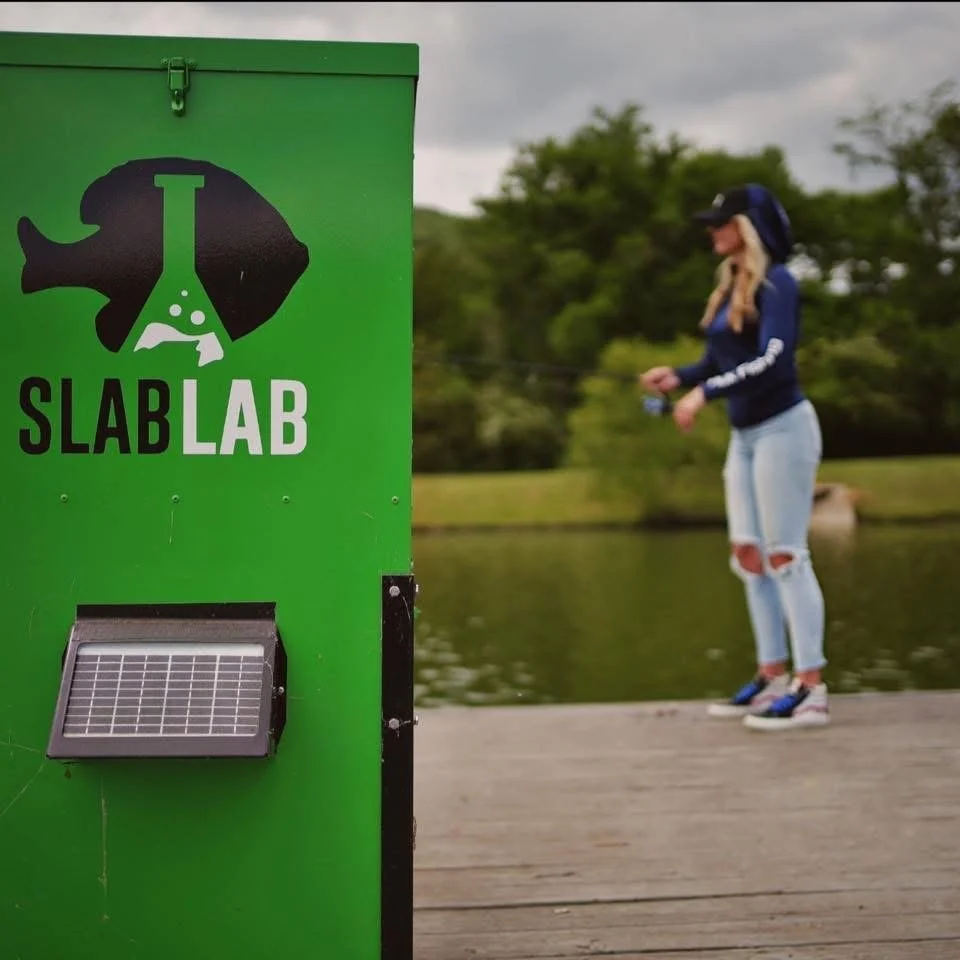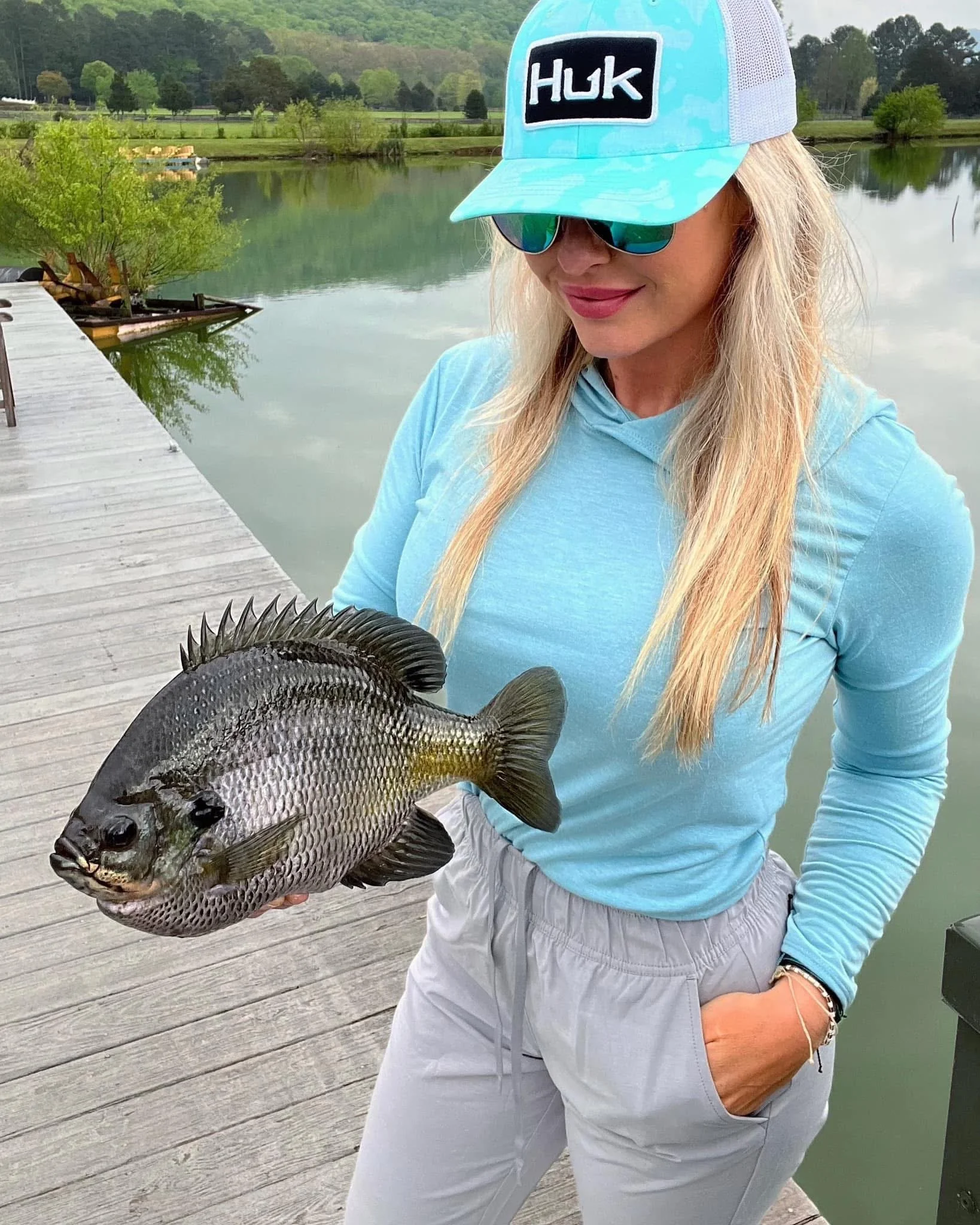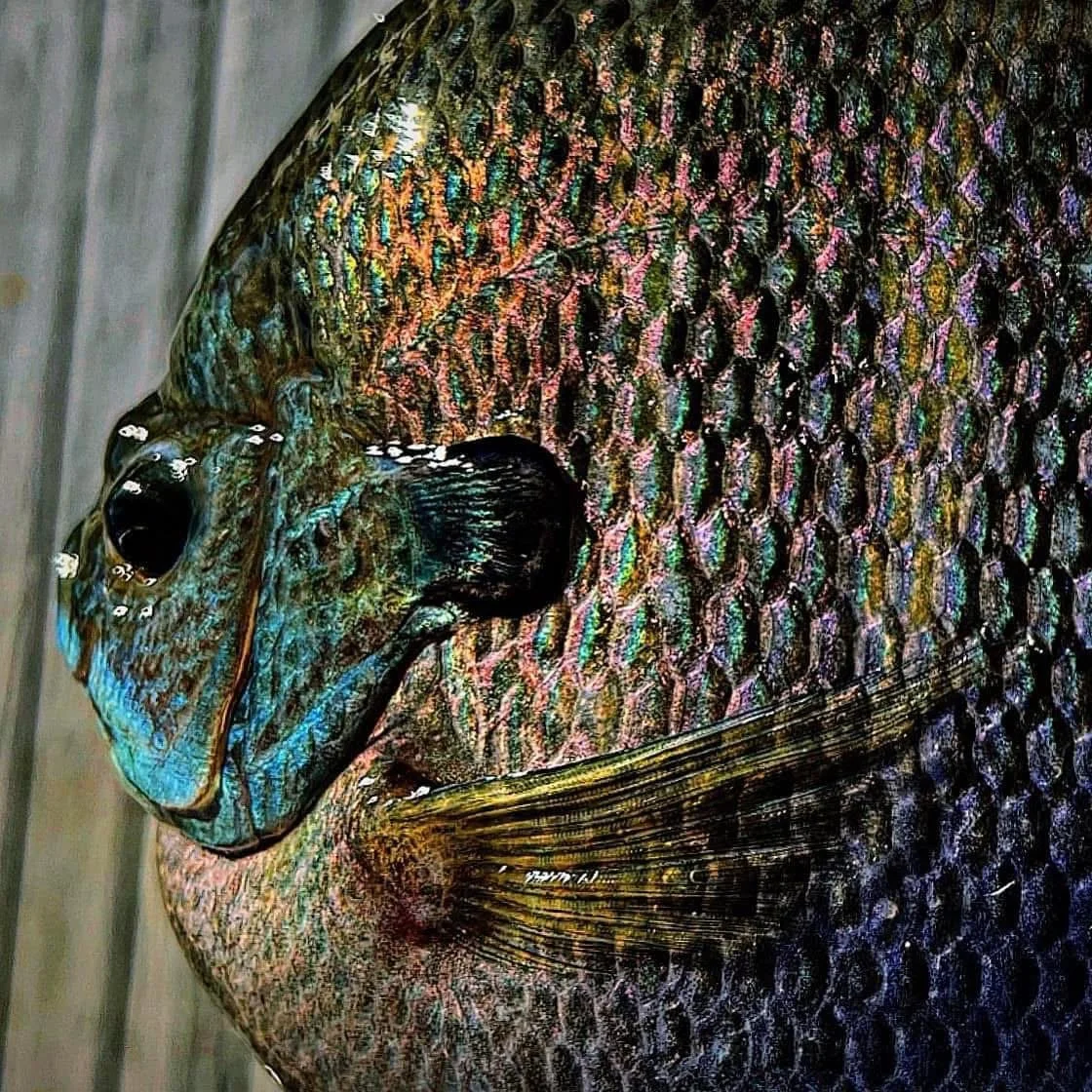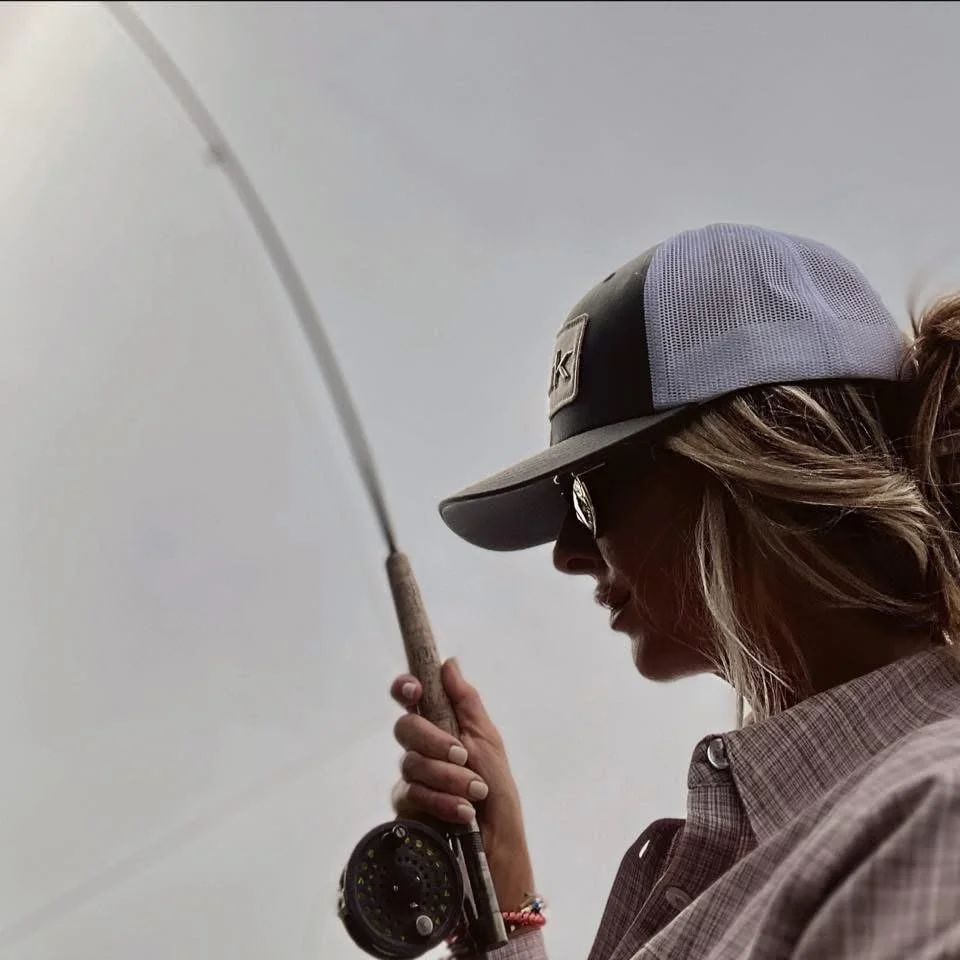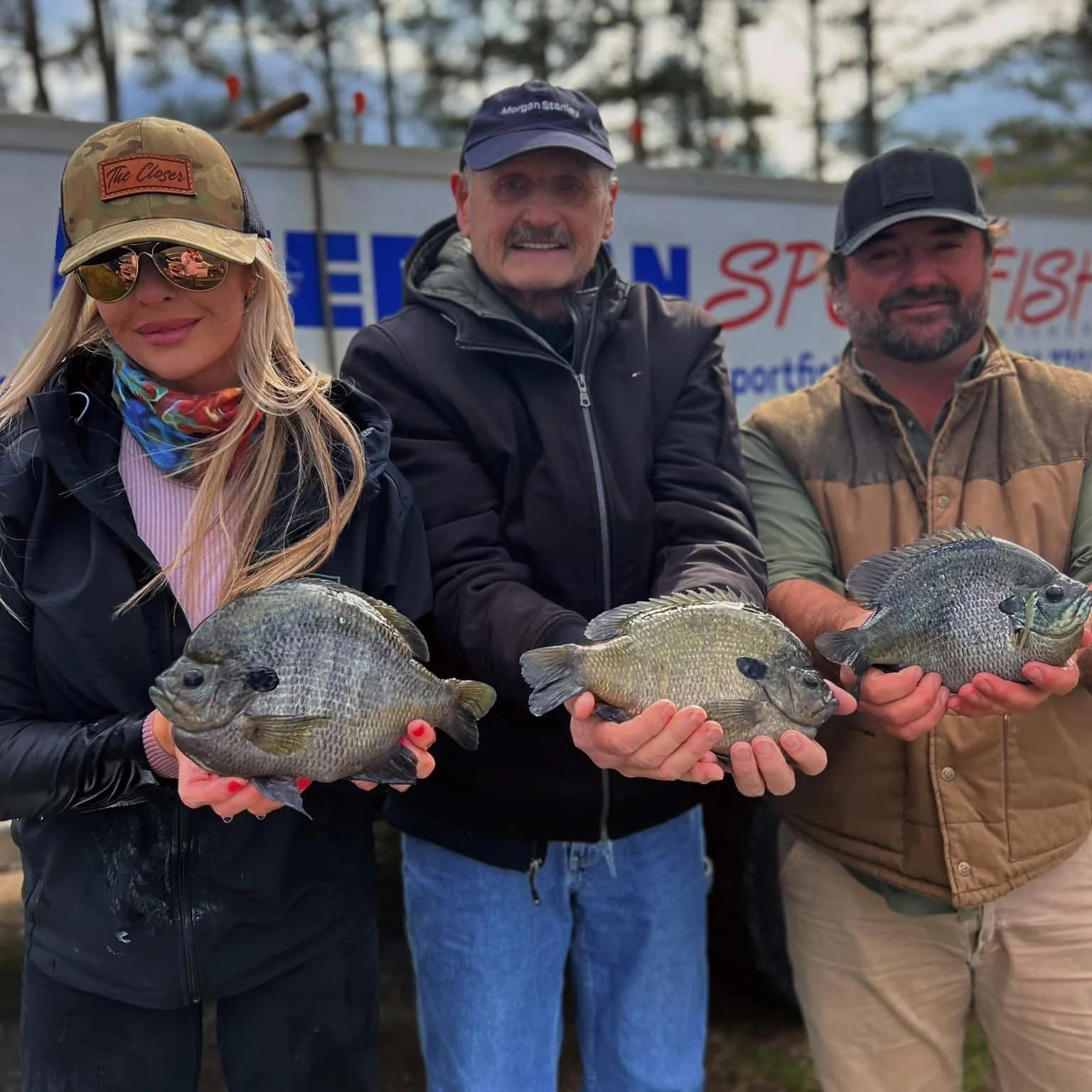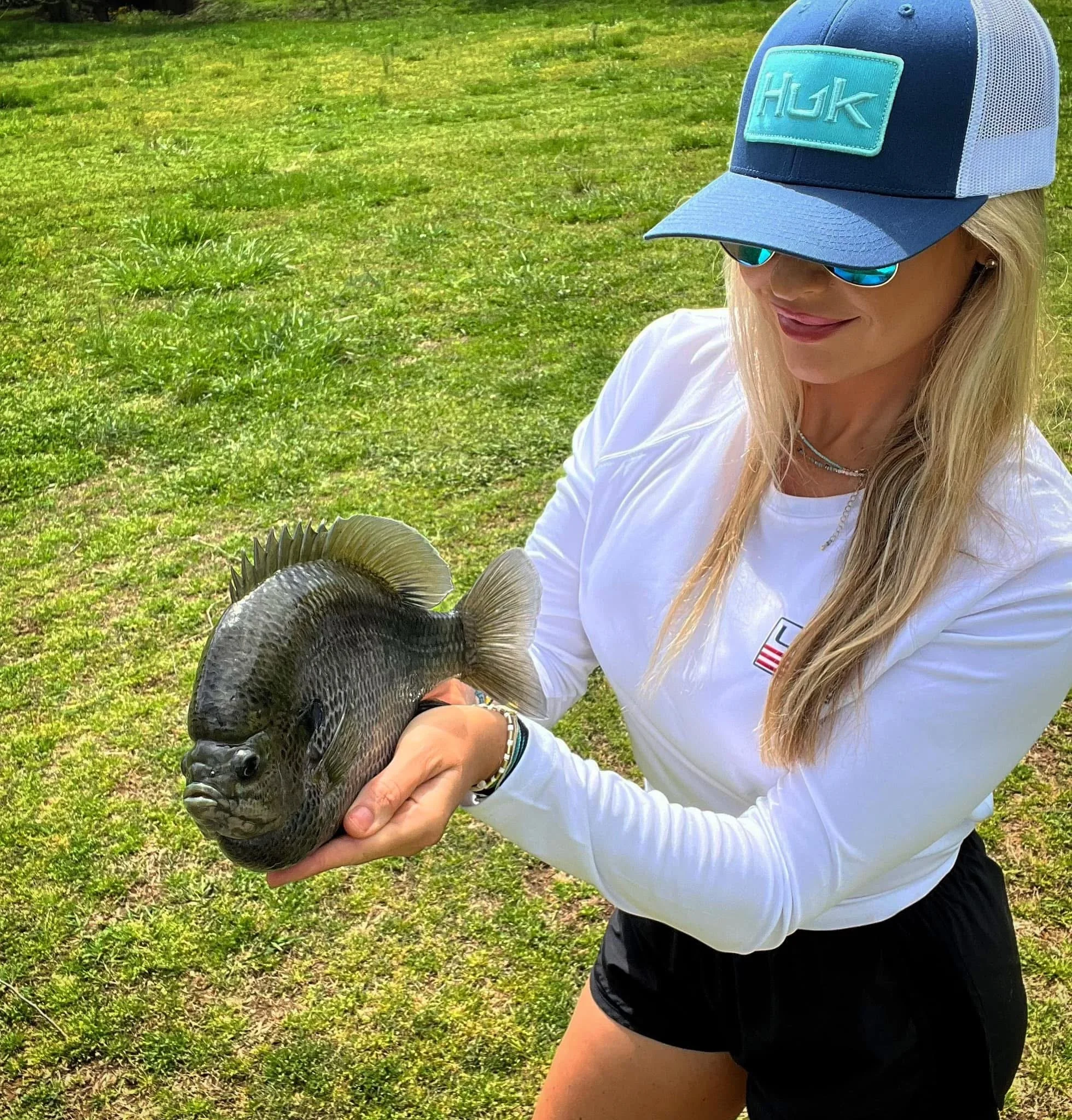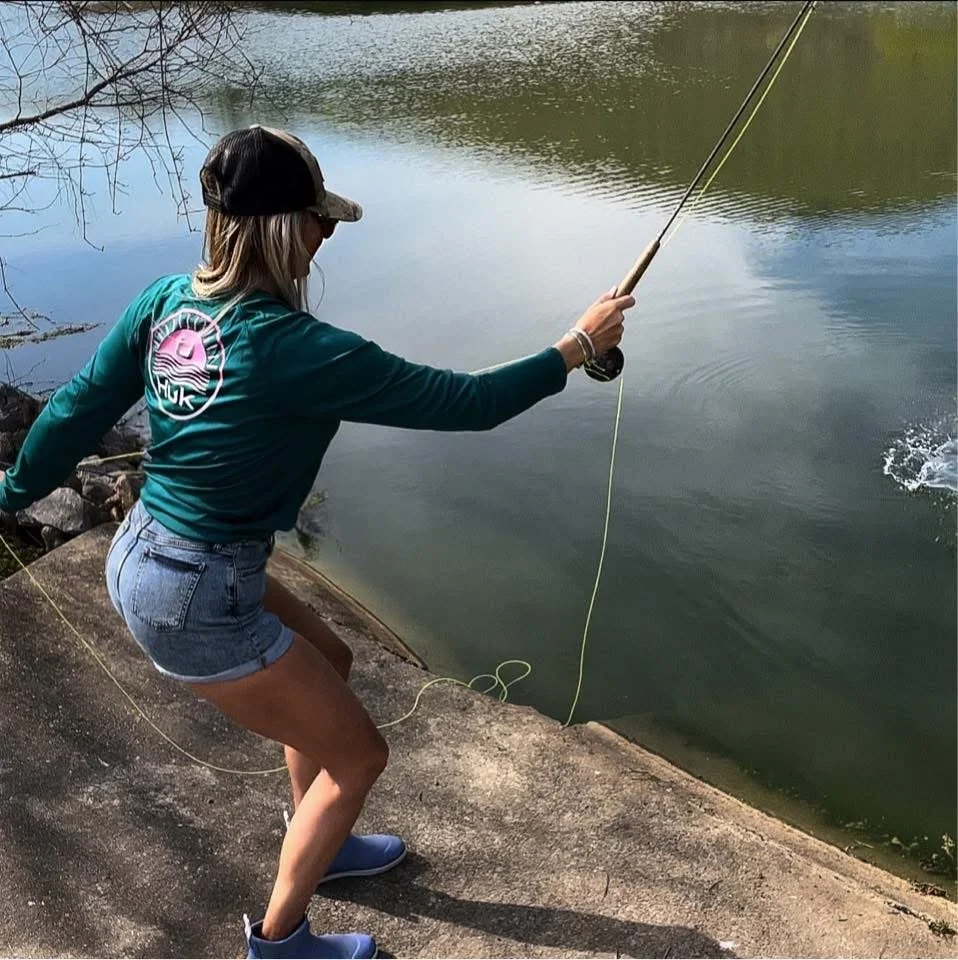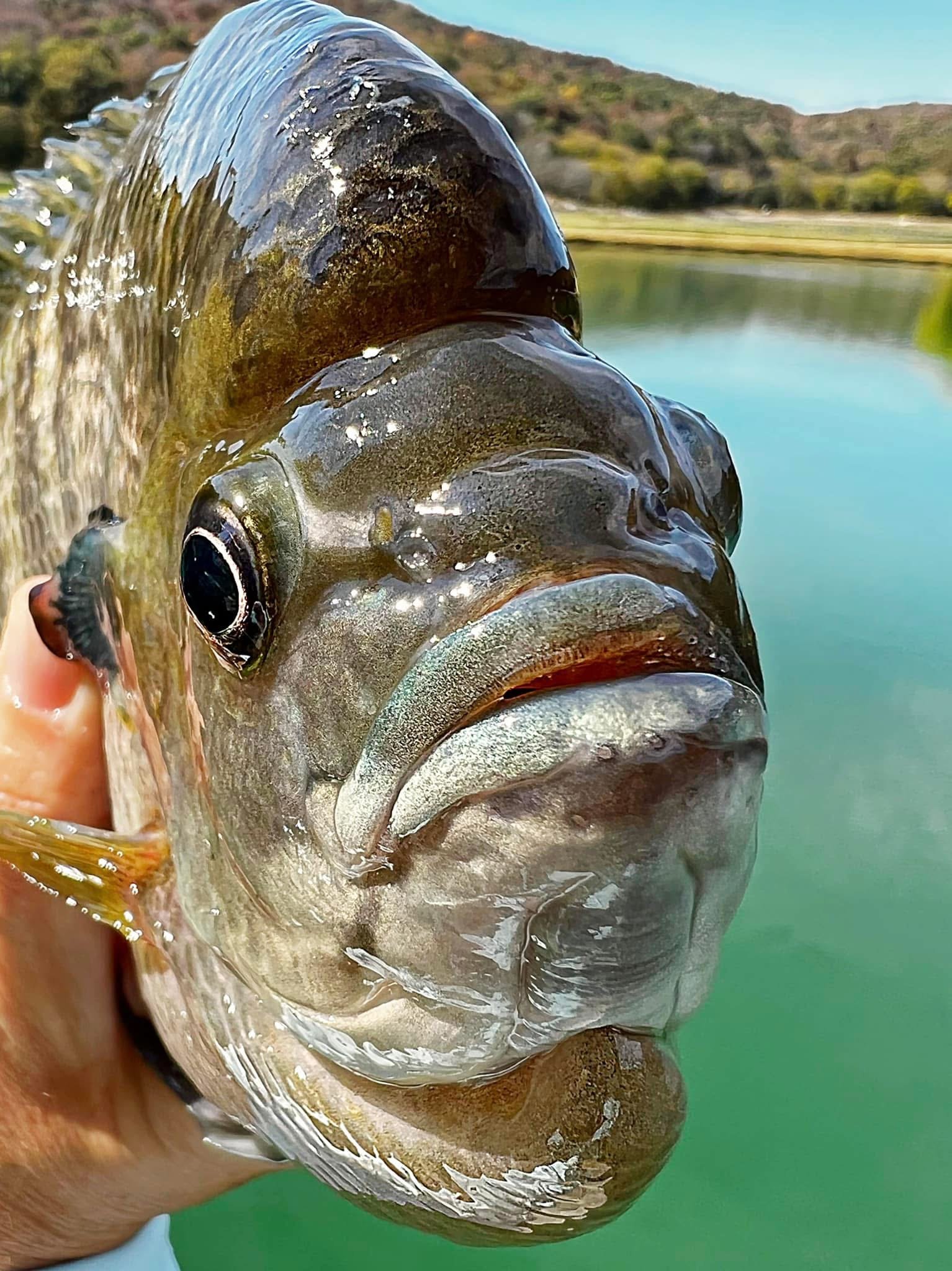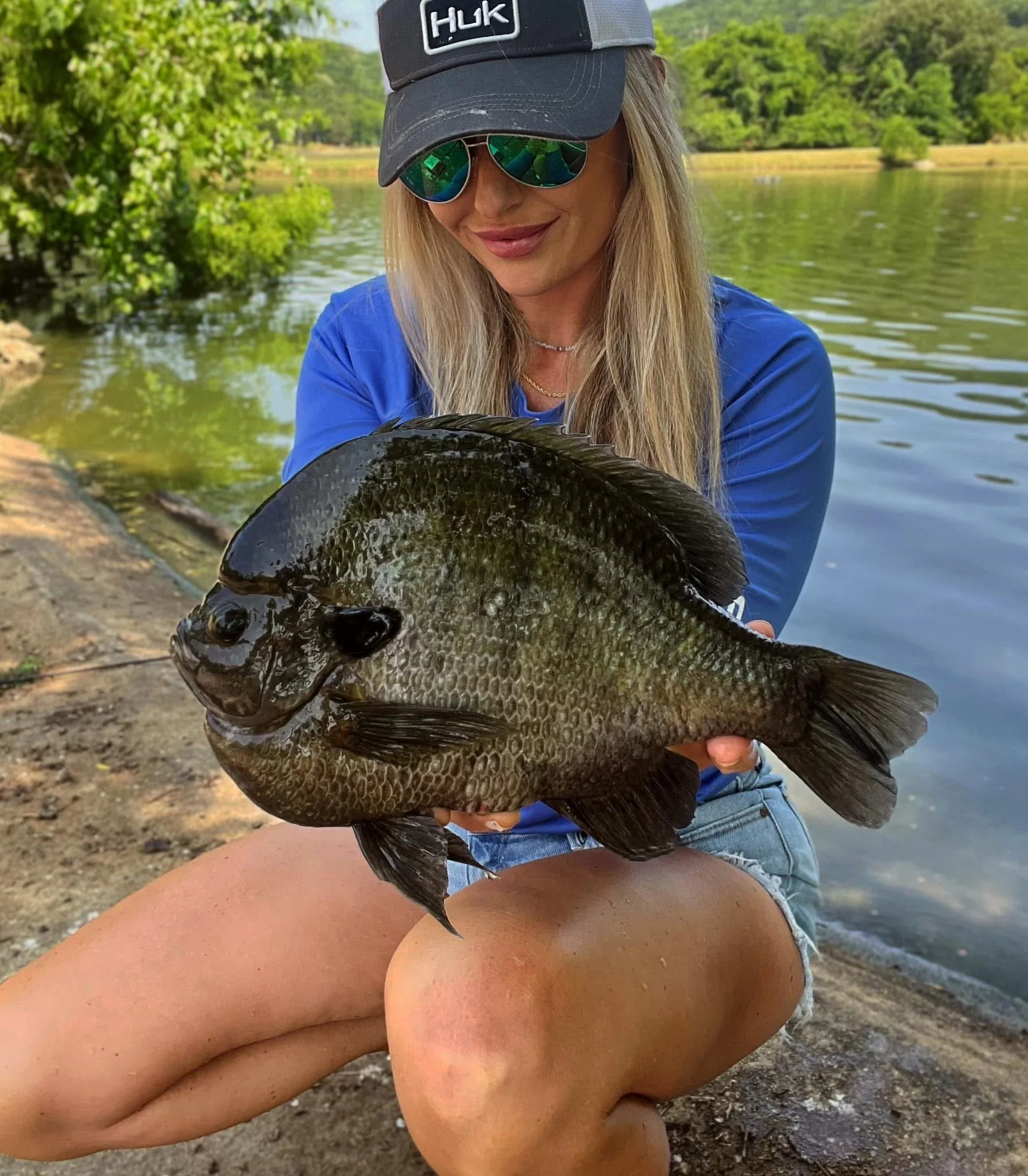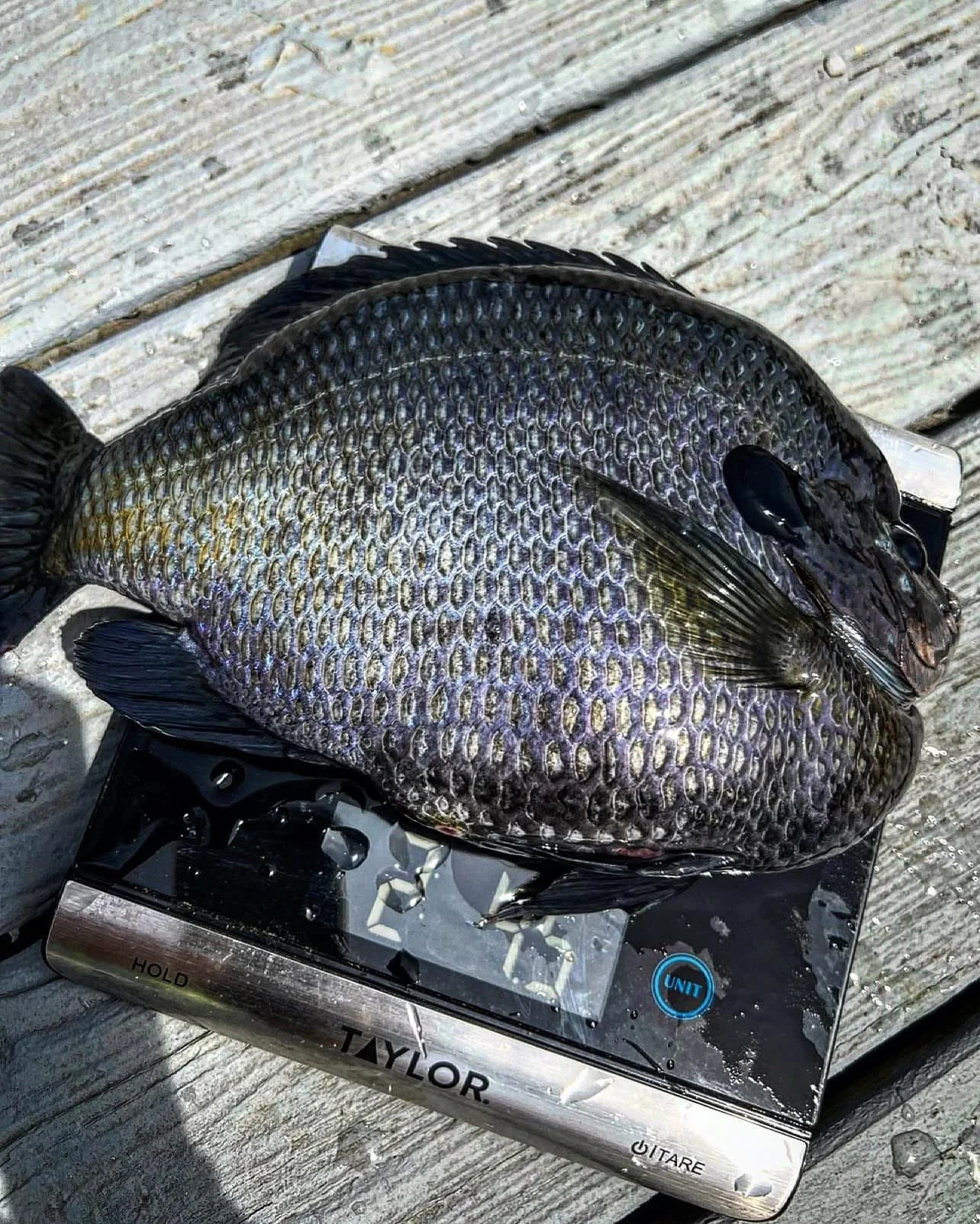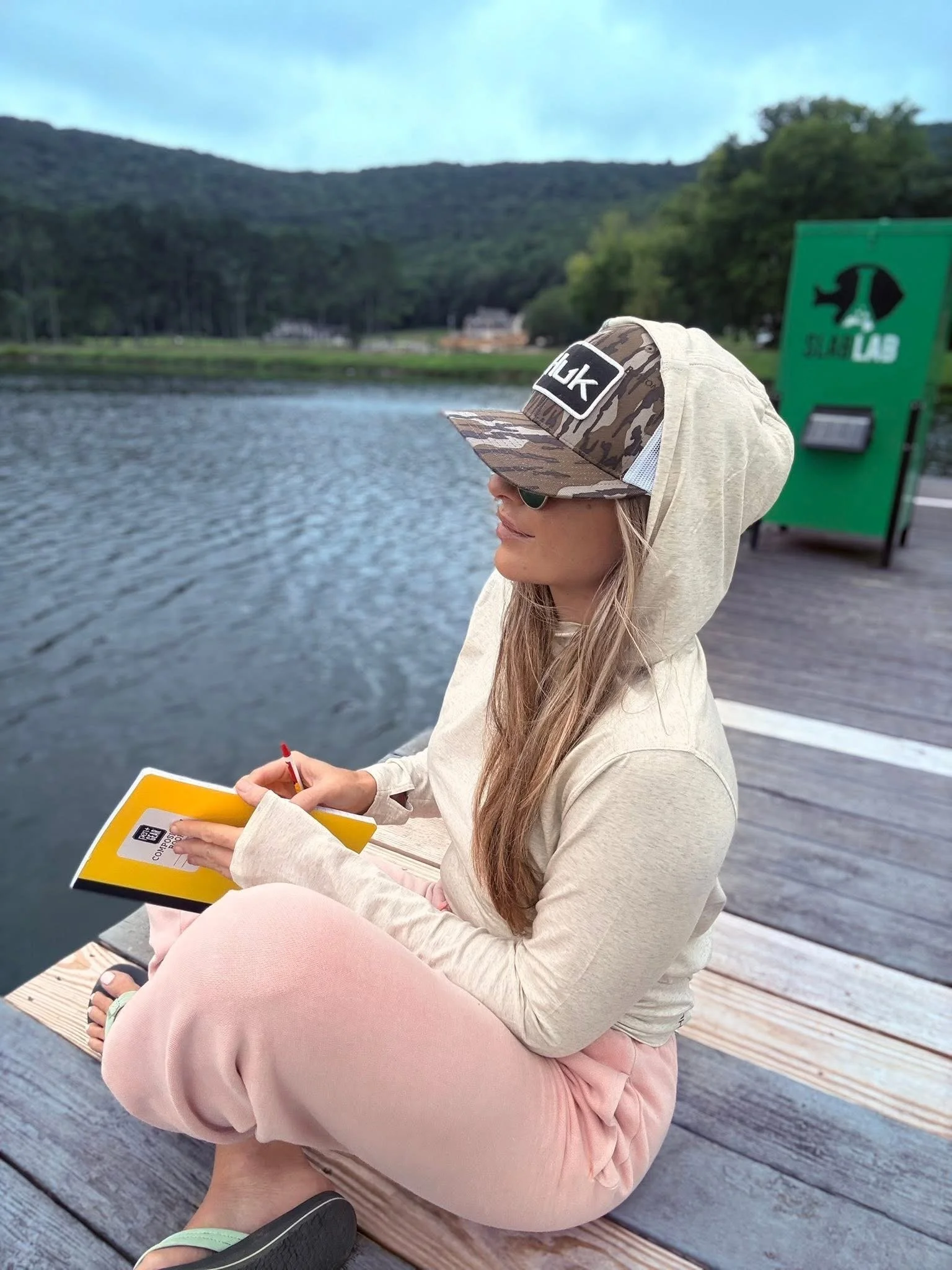The Underdog Fish: How The Slab Lab is Rewriting the Bluegill Story
Sarah Parvin (right) examines a large coppernose bluegill specimen with her father, Dr. Dennis Olive (left), at The Slab Lab in Huntsville, AL. Image credit: Sarah Parvin / The Slab Lab
Bluegill often sit near the bottom of the totem pole in the minds of many anglers. They are the quintessential “kid fish”—small, usually plentiful, and a reliable first catch. Yet in a large private pond in Huntsville, Alabama, one woman and her father are using science to maximize the genetic potential of the sunfish to create trophy specimens
Enter The Slab Lab, an experimental venture by Sarah Parvin and her 75-year-old father, Dr. Dennis Olive, dedicated to growing some of the most impressive coppernose bluegill the world has ever seen.
“The bluegill is the underdog fish,” Parvin says. “They’re a highly underrated sport fish, especially at trophy levels, because a lot of people aren't used to seeing 2- and 3-pound bluegill.”
The Slab Lab was not initially intended for bluegill. The 5-acre pond was designed to grow trophy bass, a common goal for pond managers in the South. But in 2018, a "perfect storm" of high temperatures, a toxic cyanobacteria bloom, and a sudden 4-inch rainfall caused an oxygen crash that wiped out the fishery.
In the months following the catastrophe, however, Parvin began catching bluegill that looked entirely different from any she had seen before.
"The bluegill I was catching were large, they had shoulders, and they had giant foreheads, which we now call helmets," she recalls. "I could not wrap my head around why these fish looked like something out of a sci-fi movie, and I was fascinated by them."
At Parvin’s urging, the project was reborn with a new goal: to grow the largest possible coppernose bluegill. So far, the heaviest specimen the pond produced weighed in at 3.1 pounds.
“We’ve accomplished our goals with growing trophy bass. Our pond grew 13- and 14-pound Tiger Bass,” Parvin notes. “We wanted to try something different, and managing trophy bluegill in the South is not very common. Dad and I decided, ‘We’re going to do this, but we'll have to pivot, literally in mid-dance, and figure out how to do this going forward.’”
Parvin was first drawn to the fish for its outsized fighting ability, tenacity and beautiful colorations. She often makes posts on social media showing off impressive specimens and the intricate patterns of their scales.
"It was like every time I was thinking, 'Why, I'm catching a bass, this is a bass I'm reeling in,' and it was a bluegill," she adds.
The Slab Lab's quest for giant bluegill is largely driven by a scientific approach, though it’s not Parvin’s background. Parvin, 42, built a 20-year career in real estate and sales, where she earned her favorite nickname, "The Closer." Her partner in fish research, however, is a scientist. Together, they’ve had to learn much through trial and error. Now, they are no less than experts on panfish.
"When you are wanting to take a fish like the bluegill and push it to its max, you have to understand that fish on a cellular level," Parvin explains. “It's a rabbit hole of big bluegill, and welcome to it, I’m your guide!”
With limited information available on managing trophy bluegill in the South—where trophy bass research dominates—Dr. Olive applies his background in critical and comprehensive thinking to their management strategy.
Their unique approach has led to some surprising discoveries. The Slab Lab pond, a 30-year-old, never-drained body of water, is classified as hypereutrophic, meaning it has high nutrient levels. Yet, it has repeatedly defied common pond management standards by continuously producing high numbers of trophy fish, even with constant water quality challenges.
"The Slab Lab just superseded all the traditional rhyme, reason and rules of pond management and continuously produced in high numbers these trophy bluegill," Parvin says.
The project’s genetically superior fish have attracted scientific interest, partnering with the American Sport Fish hatchery to understand the biology and genetics of these remarkable fish.
Parvin is an avid angler who will "fish in a mud puddle," but her time at The Slab Lab has made her an advocate for bluegill conservation, particularly in public waterways. She stresses that a key misconception is keeping the largest fish for the dinner plate.
Bluegill are excellent table fare, but removing the largest fish—which are often the parental males—can be detrimental to the ecosystem.
"People want to keep the biggest fish for supper and not release those fish, particularly the parental male bluegill," Parvin cautions. "That fish is the genetic protector. He sleeps in the nest, guards the nest, and cares for the eggs. He is very important to continuing the genetics that you want in any fishery."
These "bull males" are critical for providing a continual forage base for larger fish, such as bass, and ensuring the health of the fishery.
Parvin offers three key ways for anglers to identify and release the most important parental male bluegill:
Size: A bluegill in the 9- to 10-inch range should likely be released.
Ear Tab: If the black ear tab looks tattered, torn or worn down, it's a good indication the fish is a parental male and should be released.
Appearance: Parental males often have the large, blocky head, or "helmet," and a distinctive, juggernaut appearance, while females have a gentler slope on the face.
While the Slab Lab is currently closed to guided trips following a disastrous fish kill in July, Parvin’s motivation remains strong. For her, the venture has become less about breaking records and more about the experience with her father.
"I don't even look at it as far as breaking any type of record anymore because I've seen what these fish are capable of doing, and that's more than enough for me," she says.
Parvin shares that the chance to work "shoulder to shoulder" with her father has been the greatest reward. After missing a chunk of time with him as a teenager, the last seven years of managing the pond together have deepened their bond.
"I actually have a chance to come back as an adult and spend this time with my dad that I otherwise would never have had," she reflects. "It's really taken our relationship to the next level."
Parvin uses her growing social media platform to encourage others to connect with nature, whether through trophy fish management or simply exploring local creeks. She is also a mentor with The Mayfly Project, a 501(c)(3) organization that teaches fly-fishing and good outdoor stewardship to foster children.
"We’ve got to start with the youth, we've got to get the kids involved," she emphasizes. "That's so important to me."
For Parvin, a love of fishing goes beyond big bass and record-size bluegill. It’s an appreciation for the moment, especially when fishing with the timeless bobber.
"I'm going to be real old school here and say it’s hard to beat a bobber and a red worm," she declares. "I have the time of my life watching that bobber. I don't care how old I get... if I put a bobber on, I'm so fascinated by watching that bobber move and then sink and go under."
Whether she’s reeling in creek chubs with a fly rod or chasing a trophy drum in a competition, Parvin says she'll be happy.
"I love to catch anything," she says. "I have the best time fishing."
The Slab Lab, despite its challenges, serves as a testament to the incredible potential of one of North America's most common fish and the powerful bond between a father and daughter who dedicated themselves to finding its slab-sized limits.
To keep up with Sarah and the Slab Lab, you can find her on Facebook, Instagram (@sarah_the_closer_parvin), TikTok (@sarahthecloserparvin), and YouTube (@sarahthecloserparvin).
*Author’s note: A special shoutout to Richard “Trae” Anderson of Reel Time Anglers for helping make this story happen by introducing me to Sarah.
